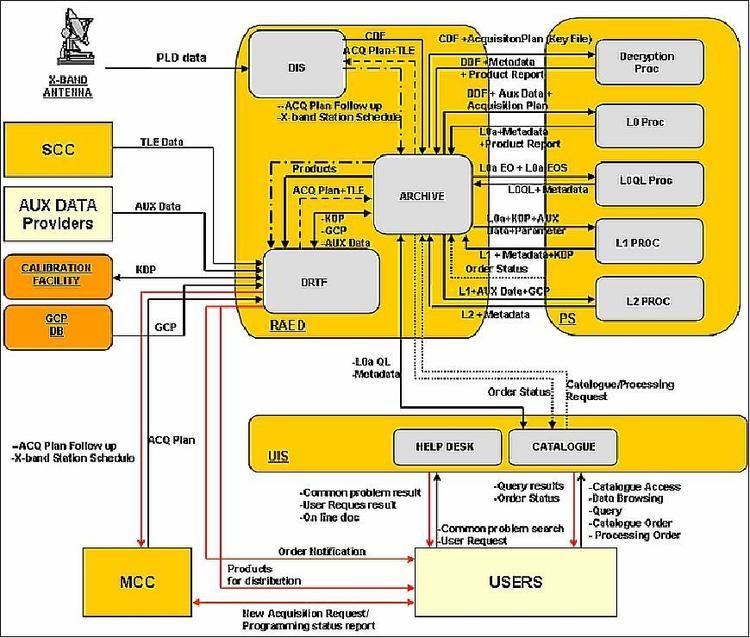Operator ASI Launch date June 2014 Inclination 98.19° | Mission duration 5 years (planned) Inclination 98.19° Period 1.6 hours Manufacturer Selex ES | |
 | ||
Mission type Earth observationTechnology Website www.asi.it/en/flash/observing-earth/prisma Launch mass 550 kilograms (1,210 lb) Dimensions 1.75 m x 1.54 m x 3.4 m Similar Hispasat AG1, Kounotori 7, Progress MS‑05, Super Low Altitude Test Satel, Lunar Polar Hydrogen | ||
PRISMA (PRecursore IperSpettrale della Missione Applicativa, Hyperspectral PRecursor of the Application Mission) is an Italian Space Agency pre-operational and technology demonstrator mission focused on the development and delivery of hyperspectral products and the qualification of the hyperspectral payload in space.
Contents
Overview
PRISMA is an Earth observation satellite with innovative electro-optical instrumentation which combines a hyperspectral sensor with a medium-resolution panchromatic camera. The advantages of this combination are that in addition to the classical capability of observation based on the recognition of the geometrical characteristics of the scene, there is the one offered by hyperspectral sensors which can determine the chemical-physical composition of objects present on the scene. This offers the scientific community and users many applications in the field of environmental monitoring, resource management, crop classification, pollution control, etc. Further applications are possible even in the field of National Security.
PRISMA is a program completely funded by ASI and is a follow on of HypSEO mission. It is scheduled for launch in 2018 aboard a Vega rocket.
Scientific objectives
Payload
The Hyperspectral / Panchromatic payload is derived from HypSEO and updated as for the JHM study:
